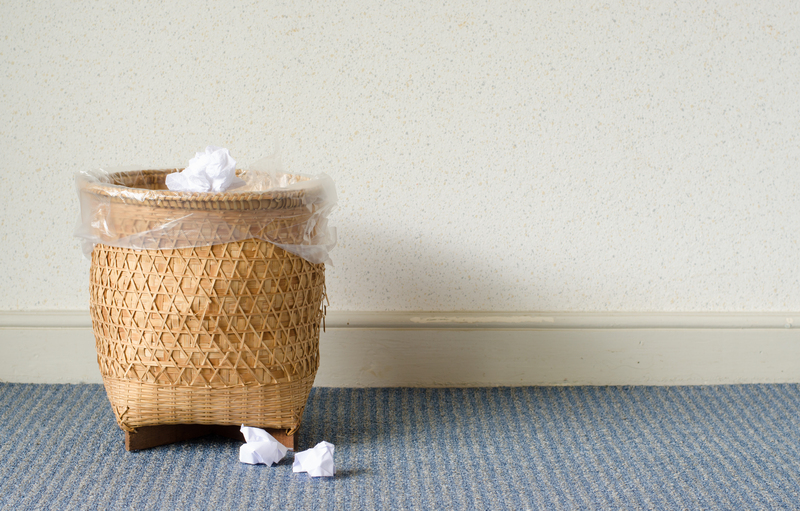Plastics You Should Consider Avoiding: A Comprehensive Guide
Plastic is everywhere--from packaging and containers to household goods and clothing fibers. While plastic has revolutionized many industries, not all plastics are created equal. Some types pose significant dangers to your health and the environment. In this detailed guide, discover which plastics you should avoid, why they are problematic, and how to make safer, more sustainable choices.

Why Some Plastics Are Harmful
The vast world of plastics is coded with numbers (resin identification codes) that reveal what they are made of. Some of these contain chemicals that may leach into your food, drink, or surroundings-- risking your health and polluting the environment. Key concerns include:
- Endocrine disruptors like BPA and phthalates
- Toxic additives such as heavy metals and flame retardants
- Microplastic shedding and pollution
- Non-biodegradability, leading to landfill and ocean buildup
Understanding how to identify and select safer materials is crucial for protecting your well-being and the planet.
Plastics to Avoid: The Numbers Guide
Most plastic products are marked with a triangular arrow symbol containing a number from 1 to 7. These numbers reveal the type of plastic used. Some are relatively safe, but several are widely recognized as plastics to avoid for both health and environmental reasons. Below, we break down the most problematic plastics you should consider avoiding, what makes them dangerous, and their typical uses.
Plastic #3: Polyvinyl Chloride (PVC)
- Code: 3
- Common Uses: Pipes, cling wrap, shower curtains, vinyl flooring, some toys, credit cards
Why Avoid PVC?
Polyvinyl chloride, or PVC, is one of the most toxic forms of plastic in use. It often contains harmful chemical additives like phthalates (to soften) and heavy metals (for stability). When exposed to heat or sunlight, PVC can release dioxins--a group of highly toxic compounds linked to cancer and developmental issues. During manufacturing, use, and disposal, PVC is a major contributor to hazardous environmental pollution.
- Health Effects: Hormone disruption, reproductive issues, cancer risk
- Environmental Impact: Dioxin emissions, non-recyclable in most regions
Tip: Avoid products labeled with code 3, look for alternatives made of glass, silicone, or certified non-toxic materials.
Plastic #6: Polystyrene (PS)
- Code: 6
- Common Uses: Foam coffee cups, takeout containers, meat trays, egg cartons, disposable cutlery
Why Avoid Polystyrene?
Polystyrene, also known as Styrofoam, is lightweight yet structurally weak, making it prone to breaking into small particles that pollute soil and water. It can leach styrene--a potential human carcinogen--especially when heated or in contact with fatty or acidic foods.
- Health Effects: Suspected carcinogen, potential neurotoxin
- Environmental Impact: Difficult to recycle, responsible for widespread litter and microplastic pollution
Tip: Opt for reusable or compostable food containers and cups. Say no to Styrofoam when ordering takeout.
Plastic #7: Other (BPA, Polycarbonate, etc.)
- Code: 7
- Common Uses: Water bottles, sippy cups, food storage containers, electronics, sunglasses
Why Avoid "#7 Other" Plastics?
This is a catch-all category that includes many plastics containing or derived from bisphenol A (BPA), polycarbonate, and newer, untested chemicals. BPA is notorious for its hormone-disrupting properties. While many products now boast "BPA-free" labels, they might use similar compounds with unknown risks.
- Health Effects: Endocrine disruption (especially affecting children), metabolic and reproductive disorders
- Environmental Impact: Often non-recyclable, manufacturers use replacements with incomplete safety data
Tip: Prefer glass or stainless steel for drinkware and food storage. Don't use old or scratched plastic containers for food, especially if they fall into this category.
Plastic #1: Polyethylene Terephthalate (PET or PETE)
- Code: 1
- Common Uses: Soda and water bottles, salad dressing containers, food jars
Why Limit PET Plastics?
Although PET is generally considered safe for single use, repeated use or exposure to heat can encourage leaching of chemicals like antimony, a potentially toxic metalloid, and phthalates. PET is lightweight and easy to recycle, yet only about 30% is actually recycled.
- Health Effects: Potential hormone disruption from leaching, especially if reused or heated
- Environmental Impact: Most end up in landfills or oceans; contributes to microplastic pollution
Tip: Avoid reusing PET bottles. Switch to refillable, safer alternatives for water and beverages.
Plastic #5: Polypropylene (PP)
- Code: 5
- Common Uses: Yogurt containers, straws, bottle caps, takeout containers
Should You Avoid Polypropylene?
Polypropylene is one of the more stable plastics and rarely leaches chemicals. However, its environmental impact is significant due to its resistance to decomposition and low recycling rates. If you must use plastic, PP is one of the safer choices for food contact--but avoid single-use products to reduce plastic waste.
- Health Effects: Generally safe, though questionable with strong heating or microwaving
- Environmental Impact: Contributes to landfill and ocean waste
Tip: Limit reliance on polypropylene and choose reusable, compostable options when possible.
Other Types of Plastics to Consider Avoiding
Plastic Microfibers (Polyester, Acrylic, Nylon)
- Common Sources: Synthetic clothing, carpets, fishing gear
Why Avoid Synthetic Microfibers?
Every time you wash synthetic textiles like polyester and nylon, microfibers are released into waterways. These microplastics are now found in oceans, drinking water, and even clouds, harming marine life and entering the food chain.
- Health Effects: Unknown long-term impacts, potential to accumulate toxins in the body
- Environmental Impact: Ubiquitous microplastic pollution
Tip: Choose natural fibers (like cotton, linen, wool) when possible, and use microplastic-catching laundry bags for synthetic clothing.
Plastic Packaging and Laminates
- Common Uses: Snack bags, chip packets, multilayer food packages
Why Avoid Laminated Plastics?
Multilayer plastic packaging is usually made from mixed materials that are impossible to recycle. These single-use plastics are one of the leading sources of plastic waste worldwide.
- Environmental Impact: Landfill and ocean pollution, wildlife ingestion threats
Tip: Opt for products with minimal or recyclable packaging. Bring your own reusable bags and containers.
Why Choosing Safer Alternatives Matters
By actively reducing your exposure to high-risk plastics and supporting safer choices, you:
- Protect your health from harmful chemicals
- Reduce your contribution to plastic pollution and landfill waste
- Promote a circular economy and responsible manufacturing
- Encourage innovation in sustainable packaging
Consumer demand is a powerful driver of change. Every purchase you make can help transition away from hazardous plastics towards greener solutions.
Simple Ways to Avoid Harmful Plastics in Everyday Life
- Check the resin code: Always flip containers or packages over to see the recycling number before purchasing or reusing.
- Go for glass, stainless steel, or food-grade silicone: These materials are inert, durable, and safe for repeated use.
- Say no to single-use plastics: Bring your own shopping bags, coffee cups, and water bottles.
- Avoid microwaving plastic: Heat accelerates chemical leaching, especially in older or scratched containers.
- Seek certified non-toxic products: Look for FDA, BPA-free, or food-grade labels, and verify certifications.
- Support businesses with sustainable packaging: Choose brands that invest in compostable, recyclable, or zero-waste solutions.
- Buy in bulk: Reduce packaging waste by purchasing loose or bulk foods and household goods.
- Be careful with children's products: Young children are more vulnerable to endocrine disruptors. Choose trusted brands and safer materials like wood, silicone, or certified organic cotton.
Eco-Friendly Alternatives to Common Plastics
- Glass jars and containers for food storage
- Stainless steel water bottles and lunchboxes
- Natural fiber bags for shopping and produce
- Compostable plates and cutlery for parties and picnics
- Wax wraps or silicone lids to replace plastic wrap
Frequently Asked Questions About Avoiding Harmful Plastics
Are all plastics bad?
No, not all plastics are equally harmful. Some are safer (like HDPE #2 and PP #5) for food use but still contribute to environmental issues if they become waste. Understanding which plastics to avoid and minimizing overall plastic use is the healthiest approach.
Is BPA-free plastic really safe?
While "BPA-free" products avoid bisphenol A, they may use similar chemicals like BPS or BPF. Early research suggests these substitutes may also pose health risks. When possible, choose alternatives like glass or steel.
Can I recycle all plastics?
Recycling varies by region and plastic type. Most municipal programs accept only certain plastics (usually #1 and #2). Laminated, multi-material, and thin-film plastics are rarely recycled and often contaminate recycling streams.
What is the most harmful type of plastic for the environment?
Single-use and non-recyclable plastics, particularly polystyrene (#6) and PVC (#3), are among the worst offenders. They persist in landfills for centuries and break down into microplastics harmful to wildlife and ecosystems.

Summary: Make Smarter Choices for Health and Sustainability
Plastics to avoid include PVC (#3), polystyrene (#6), and many in the #7 "Other" category, especially when used for food, drink, or toys. These can release hazardous chemicals and resist recycling efforts. Reducing your dependence on all single-use plastics--whether clearly hazardous or not--is a wise strategy for a safer, healthier, and more sustainable future.
Empower yourself with knowledge, choose durable and non-toxic alternatives, and inspire others by example. Together, these small shifts in your daily life can make a big impact on global plastic pollution and protect future generations.
Ready to Reduce Your Plastic Footprint?
Understanding which plastics you should avoid is just the beginning. Take action today--review your kitchen cabinets, make mindful purchases, and spread awareness in your community. Every effort counts in the movement toward a healthier planet, free from the dangers of plastic pollution.